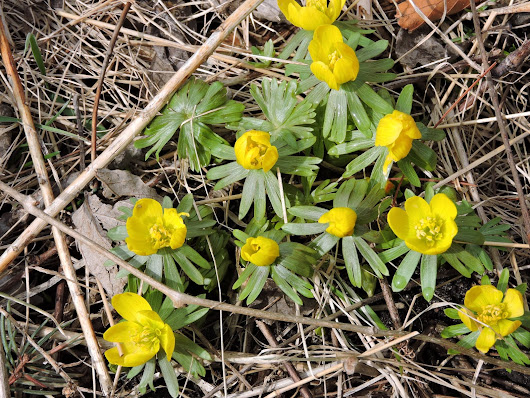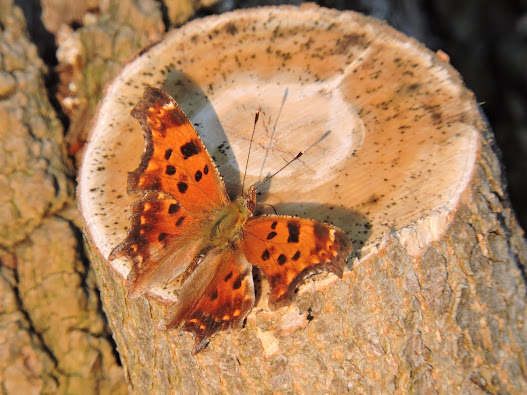Le mois dernier, notre tante Julie a eu 100 ans. En août, ma belle-mère Evelyn aura 98 ans. Tellement incroyable; près de 200 ans d'expérience entre ces deux femmes spéciales. Je me rends compte que nous avons tous vécu pour voir ce siècle tourner, mais la plupart d’entre nous n’ont pas vécu l’équilibre de notre vie dans le précédent. Tante Julie et Evelyn sont toutes deux nées dans les régions rurales du Québec dans les années 1920; tante Julie à Montmagny, sur le Saint-Laurent, en 1921, et Evelyn en 1923 dans la petite communauté des Cantons-de-l'Est de North Hatley.
(Montmagny pres du haut, North Hatley petit point rouge pres du bas)
Tante Julie est née dans une famille française et son grand-père, Nicholas, né près de 100 ans avant elle en 1822, figurait dans le recensement de 1860 comme étant un «voyageur». Nous associons généralement cela aux canots et à la traite des fourrures, mais à ce moment-là, il se peut aussi que ce soit une personne qui gagnait sa vie sur la rivière. Ses parents, Proculus et Blanche, se sont mariés en 1916 et tante Julie était leur première fille.


Evelyn est née dans une grande famille anglophone, l'une des nombreuses au Québec dont les racines étaient aux États-Unis, ayant à l'origine traversé l'Atlantique depuis l'Europe à une époque lointaine. La vie était dure, le travail difficile à trouver et l'argent rare, mais maman se souvient d'une maison heureuse et de bons souvenirs. Une histoire particulière persiste dans mon esprit. Grand-mère Bryant avait une bonne robe qu'elle avait lavée et suspendue sur la corde pour sécher. Apparemment, une des vaches a pensé que cela pouvait être savoureux et a commencé à grignoter la robe. Grand-mère, en espionnant ce spectacle odieux, est partie après la vache avec la hache de grand-père en main. Alors que grand-mère Bryant mesurait environ `` 4 pieds et pas beaucoup '', cela apporte une image mémorable à mon imagination et clairement indélébile dans le jeune esprit de mon mari..
Grand-mère Bryant qu'Evelyn appelait 'sa petite maman '
Ce qui ressort dans mon esprit à cette époque de l'histoire, c'est à quel point c'était dangereux. Tante Julie et Evelyn avaient des frères et sœurs nés à l'époque de la «grippe espagnole». L'espérance de vie des adultes est d'environ 50 ans et au Québec, un enfant sur quatre meurt à l'âge d'un an. Dans les statistiques recueillies de 1925 à 1926, il y avait plus de quatre décès maternels par jour. L'eau n'était pas pure, l'assainissement incertain, le lait non pasteurisé et des maladies comme la diphtérie, la typhoïde, le choléra et la tuberculose continuaient à provoquer des épidémies et à causer des décès annuels. En 1927, il y eut une épidémie de fièvre typhoïde à Montréal qui compta 5000 cas, dont 10% sont décédés.
Pour tante Julie, c'étaient des dangers vécus dans son expérience familiale. Sur les six enfants nés de ses parents, deux seulement vivaient encore en 1945, un étant mort en bas âge et un âgé de 7 ans. De plus, Blanche, la mère de tante Julie, est décédée dans les deux semaines suivant la naissance de son dernier enfant. À cette époque, les naissances se déroulaient principalement à domicile et s'il y avait un médecin, il était appelé et il y avait une facture pour payer les services. Si payer cette facture était déjà une épreuve, il n'était pas rare qu'une femme souffre alors sans les autres services d'un médecin, même si elle ne semblait pas se remettre de la naissance. Quelle que soit la raison de la mort prématurée et prématurée de Blanche, elle a laissé Proculus sans épouse et tante Julie et ses quatre frères et sœurs sans mère.
Si naître était périlleux, survivre à l'enfance était tout aussi difficile. En 1916, il y eut une épidémie de paralysie infantile. En 1930, le nombre de cas augmentait encore chaque année, et en 1937, lorsqu'il y eut une autre épidémie grave, il n'y avait qu'un seul poumon de fer dans tout le Canada. Un vaccin n'est devenu disponible qu'en 1952, mais la polio a culminé en 1953 au Canada avec 9 000 cas et 500 décès. À la naissance d'Evelyn et de tante Julie, les scientifiques travailleront toujours sur les premiers vaccins contre la diphtérie, la coqueluche, la tuberculose et le tétanos. (En passant, il est intéressant de noter qu'en 1853, en Grande-Bretagne, un vaccin est devenu disponible pour la variole, un tueur virulent. La décision du gouvernement de rendre la vaccination obligatoire a entraîné des émeutes et la formation de la Ligue anti-vaccination! )
La scarlatine fut mortelle en 1871 et toujours présente en 1925.
Pour les parents d'Evelyn et de tante Julie, la Première Guerre mondiale appartenait encore à un passé récent. Dans un proche avenir a eu lieu le krach boursier de l'automne 1929
à suivre par la Grande Dépression. Au moment où tante Julie et Evelyn avaient 20 ans, le monde était de nouveau en guerre et cette fois, oncles, frères et camarades de classe ne reviendraient peut-être jamais. Rolland, le frère de tante Julie, a attesté en mars 1942.

Rolland n'est pas revenu..
L'Action catholique 20 dec 1945
Être originaire d'une communauté anglaise signifiait que, pour Evelyn, davantage de «garçons» qui étaient des copains d'école, ainsi que des membres masculins de la famille, partaient à l'étranger. Alors qu'une génération d'hommes se battait, les femmes à la maison devaient travailler dans les fermes et les usines pour subvenir aux besoins de leurs familles et de l'effort de guerre. Evelyn est allée travailler dans une grande usine de Sherbrooke en utilisant un tour pour fabriquer des pièces pour des canons et des chars Bren.
À la fin de la guerre, le frère d'Evelyn est rentré chez lui, mais beaucoup de ses amis ne l'ont pas fait. Les hommes et les femmes qui sont rentrés de la guerre ont été changés mais devraient retourner à une vie «normale». Evelyn et tante Julie ont épousé des frères, dont l'un avait fait la guerre. C'est ainsi qu'ils se sont rencontrés; deux femmes du même âge mais issues de milieux, de religions et de langues diverses.
(Baptist Church, North Hatley St Thomas, Montmagny)
Cependant, les événements de Life ont conspiré pour les séparer pendant plus de 50 ans, mais il y a beaucoup d'ironie dans le fait qu'ils ont tous deux eu des mariages difficiles et ont fini par élever seuls leur famille.
Il me semble que le 20e siècle a été une période de changements extraordinaires. L'année de la naissance de tante Julie, William Lyon MacKenzie King est devenu premier ministre; il y a eu 18 élections depuis.
Nous sommes passés des planeurs de Wright aux jets supersoniques; regarder la lune pour marcher dessus, puis les scientifiques vivant dans l'espace. Les modèles T des années 20, appartenant à quelques-uns, sont devenus des voitures dans pratiquement toutes les allées familiales et certaines sont alimentées par batterie au lieu de carburant. Des ordinateurs! Au départ, la taille de pièces entières s'est transformée en nanotechnologie du microscopique. (Personnellement, je ne comprends toujours pas le boulier et les personnes âgées qui embrassent le monde souvent terrifiant et en constante évolution de l'ordinateur doivent être louées. Dieu merci, mon petit-fils de trois ans peut m'expliquer les choses.)
L'âge victorien chargé de règles est devenu la rébellion des années 20 lorsque les femmes ont osé se couper les cheveux et montrer la silhouette de leur corps. L'interdiction a été abrogée dans la majeure partie du Canada dans les années 20, suivie d'une augmentation de l'utilisation et de l'abus de substances interdites, les dangers du tabagisme n'étant documentés que dans les années 1950.
La Presse 1927
Les années 1920 étaient encore pleines de dangers de maladies graves, mais des vaccins ont été découverts et rendus obligatoires pour pratiquement éradiquer les maladies infantiles. Il est devenu possible de transplanter des organes avec succès et des membres artificiels ont été développés. Des technologies d'ADN et de séquençage ont été découvertes.12 juillet 1988La Tribune
Il y a eu tellement de découvertes importantes, qui ont changé la vie, voire miraculeuses dans une période de temps relativement courte, et pendant que Tante Julie et Evelyn survivaient à l'enfance, se mariaient, élevaient leurs propres enfants et enduraient les défis de la vie. Des choses qui se sont progressivement incorporées à notre façon de vivre presque sans préavis.
Et maintenant pour vivre dans le siècle prochain où tout va plus vite, devient plus petit et plus efficace, et évolue dans le domaine de la science théorique et de l'ingénierie de l'impossible.
Il semble tout à fait injuste qu'après avoir survécu à la grippe espagnole de 1918 et à de nombreuses années suivantes, à la grippe asiatique de 1957 et à la grippe de Hong Kong de 1968, tante Julie devrait être en quarantaine pour Covid 19 le jour de son 100e anniversaire parce que son logement a changé. D'autre part, tante Julie a survécu à 100 ans d'adversités de la vie. Elle et Evelyn ont enduré la perte de membres de leur famille; parents, frères et sœurs et enfants. Ils ont vécu des périodes de difficultés universelles et personnelles et ont appris à vivre avec moins. Ils ont connu la maladie et ont appris à vivre avec les contraintes d'un corps vieillissant.
 (26 Mai 1942 La Tribune)
(26 Mai 1942 La Tribune)
Si c'était une expérience si émouvante de les voir réunis après tant d'années. La barrière de la langue est toujours là mais le lien d'expérience partagée était plus grand. Le rapprochement de leurs familles a été joyeux. La barrière maintenant est une pandémie et un temps qui nous sépare tous. C'est douloureux et semble interminable, mais nous espérons des retrouvailles joyeuses.
Alors que je médite sur les découvertes étonnantes du 20e siècle, il devient évident que si la médecine et la science ont évolué de façon exponentielle, la société dans son ensemble n'a pas évolué. Nous avons toujours d'énormes inégalités, du racisme et des préjugés de tous types. Nous pouvons être éclairés dans de nombreux domaines, mais l'obscurité continue de prévaloir dans d'autres. Il y a cependant des poches d'espoir, quand nous voyons que deux femmes de race, de religion et de langue différentes peuvent encore trouver une mémoire et un amour communs, même après 50 ans.















































